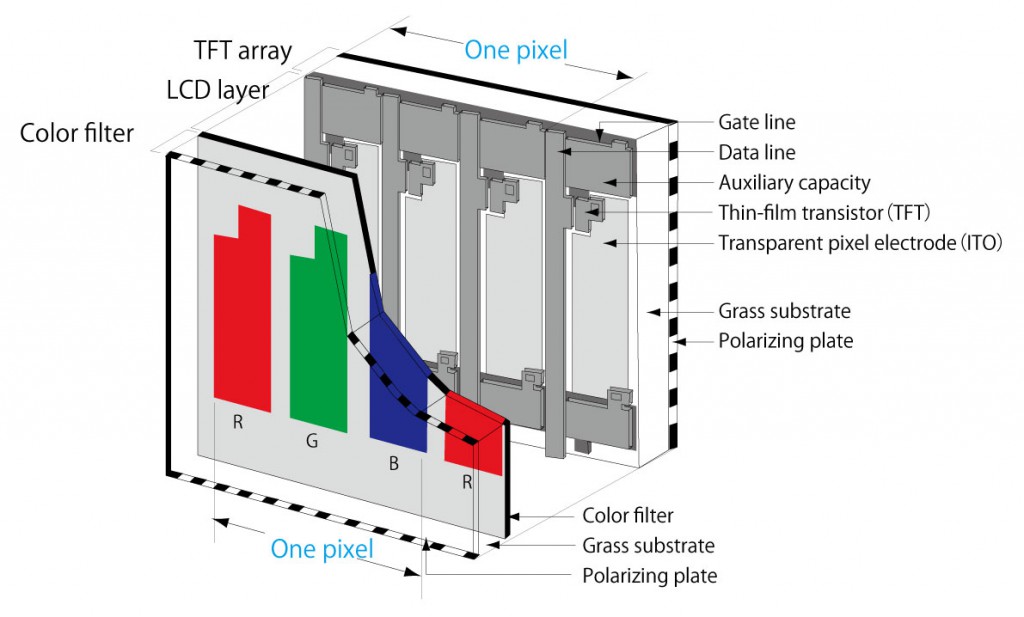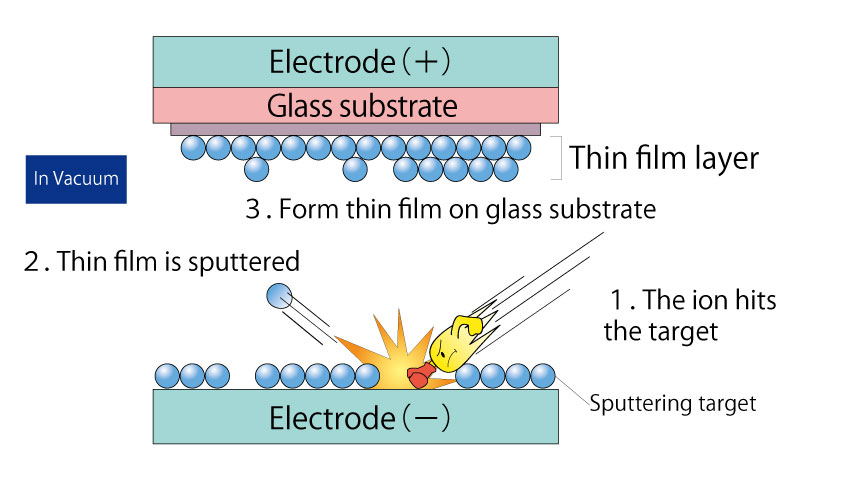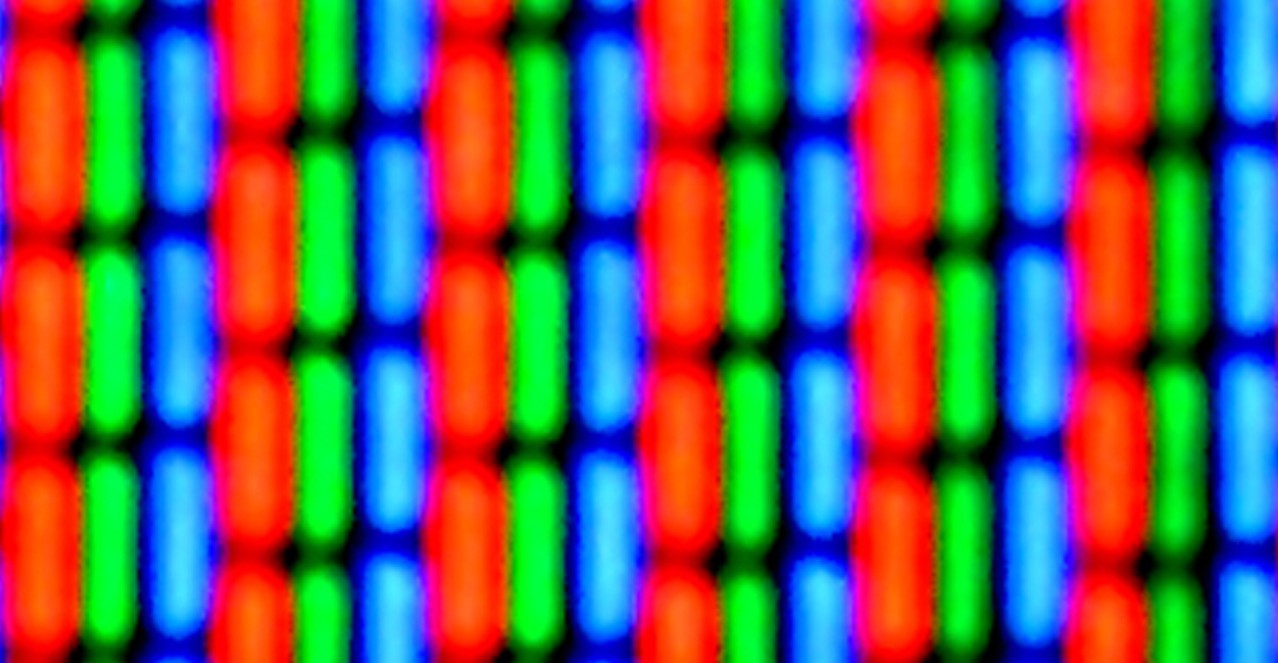This post is also available in: Japanese
The Advanced Technologies for TFT LCD TVs That Control 2,070,000 Pixels
ULVAC is an industry player that has been delivering equipment used for the production of both types of flat panel display screens that are used for TV screens, namely, PDP and LCD. The following highlights the TFT method, a format serving the most important function for displaying images on screen.
An LCD panel is composed of two glass substrates, a TFT array glass substrate and a color filter glass substrate. The former is superimposed on the latter, sandwiching liquid crystals within a gap that is approx. 5 m (0.005 millimeters) thick. A TFT array serves the function of controlling the voltage sent to individual pixels, which alters the direction of the liquid crystals. The amount of light being blocked and transmitted is adjusted by the direction of the liquid crystals. The light going through the substrate containing pixels of the three primary colors, R (red), G (green), and B (blue), which are in the color filter, becomes the color of the filter it passed through, resulting in an image being displayed on the screen.
“TFT” stands for “Thin Film Transistor.” With the TFT format, three primary color pixels, red, green, and blue, are used as a single pixel, and transistors, transparent conductive films and wiring are made using a thin film for each pixel. Thus, light emission from individual pixels becomes controlled in a reliable manner. For reference, the total number of pixels available in wide-screen HD TV is 2,070,000. Given that a single pixel is composed of three primary color pixels, a total of over 6 million tiny TFT elements are formed on the glass substrates. Their production process is highly complicated, creating an environment in which ULVAC’s vacuum equipment makes an important contribution to the process.

What is the Sputtering Method?
While thin films, a material that makes excellent functions possible, are made in a vacuum, the method of making them can be broken down roughly into the evaporation method, ion plating (IP) method, sputtering method, and chemical vapor deposition (CVD) method. To date, ULVAC has had a pioneering role for these four methods as well. In particular, one phenomenon equivalent to that of the predominant sputtering method that one can find in their daily life is the blackening at the ends of an old fluorescent lamp. This is the result of the phenomenon in which electric discharge occurs within the fluorescent lamp creating ions, which sputters the electrode materials placed at both ends of the fluorescent lamp, giving rise to a black sputtering film on the glass surface in the process. Although sputtering is an unfortunate side effect in fluorescent lamps, this phenomenon came to be recognized by experts as a highly useful technological method for making thin films.

method, and does not correctly represent the actual structure and size
of each material.

